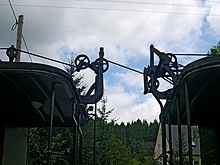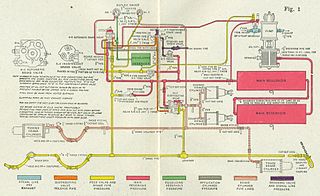
A railway air brake is a railway brake power braking system with compressed air as the operating medium. Modern trains rely upon a fail-safe air brake system that is based upon a design patented by George Westinghouse on April 13, 1869. The Westinghouse Air Brake Company was subsequently organized to manufacture and sell Westinghouse's invention. In various forms, it has been nearly universally adopted.

The vacuum brake is a braking system employed on trains and introduced in the mid-1860s. A variant, the automatic vacuum brake system, became almost universal in British train equipment and in countries influenced by British practice. Vacuum brakes also enjoyed a brief period of adoption in the United States, primarily on narrow-gauge railroads. Their limitations caused them to be progressively superseded by compressed air systems starting in the United Kingdom from the 1970s onward. The vacuum brake system is now obsolete; it is not in large-scale usage anywhere in the world, other than in South Africa, largely supplanted by air brakes.

Brake van and guard's van are terms used mainly in the UK, Ireland, Australia and India for a railway vehicle equipped with a hand brake which can be applied by the guard. The equivalent North American term is caboose, but a British brake van and a caboose are very different in appearance, because the former usually has only four wheels, while the latter usually has bogies. German railways employed brakeman's cabins combined into other cars.
Rail transport terms are a form of technical terminology applied to railways. Although many terms are uniform across different nations and companies, they are by no means universal, with differences often originating from parallel development of rail transport systems in different parts of the world, and in the national origins of the engineers and managers who built the inaugural rail infrastructure. An example is the term railroad, used in North America, and railway, generally used in English-speaking countries outside North America and by the International Union of Railways. In English-speaking countries outside the United Kingdom, a mixture of US and UK terms may exist.

A coupling is a mechanism typically placed at each end of a railway vehicle that connects them together to form a train. A variety of coupler types have been developed over the course of railway history. Key issues in their design include strength, reliability, ease of making connections and operator safety.
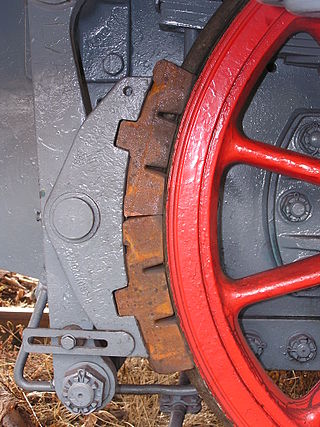
A railway brake is a type of brake used on the cars of railway trains to enable deceleration, control acceleration (downhill) or to keep them immobile when parked. While the basic principle is similar to that on road vehicle usage, operational features are more complex because of the need to control multiple linked carriages and to be effective on vehicles left without a prime mover. Clasp brakes are one type of brakes historically used on trains.
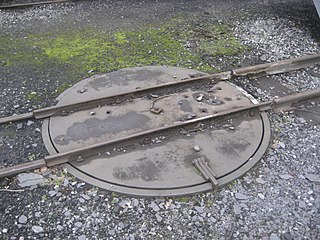
In rail terminology, a railway turntable or wheelhouse is a device for turning railway rolling stock, usually locomotives, so that they can be moved back in the direction from which they came. it is especially used in areas where economic considerations or a lack of sufficient space have served to weigh against the construction of a turnaround wye. In the case of steam locomotives, railways needed a way to turn the locomotives around for return trips as their controls were often not configured for extended periods of running in reverse and in many locomotives the top speed was lower in reverse motion. In the case of diesel locomotives, though most can be operated in either direction, they are treated as having "front ends" and "rear ends". When a diesel locomotive is operated as a single unit, the railway company often prefers, or requires, that it be run "front end" first. When operated as part of a multiple unit locomotive consist, the locomotives can be arranged so that the consist can be operated "front end first" no matter which direction the consist is pointed. Turntables were also used to turn observation cars so that their windowed lounge ends faced toward the rear of the train.
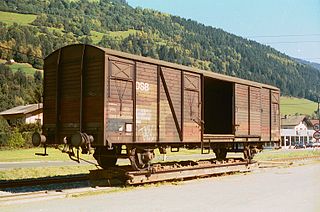
A transporter wagon, in railway terminology, is a wagon (UIC) or railroad car (US) designed to carry other railway equipment. Normally, it is used to transport equipment of a different rail gauge. In most cases, a transporter wagon is a narrower gauge wagon for transporting a wider gauge equipment, allowing freight in a wider gauge wagons to reach destinations on the narrower gauge network without the expense and time of transshipment into a narrower gauge wagons.
A gravity railroad or gravity railway is a railroad on a slope that allows cars carrying minerals or passengers to coast down the slope by the force of gravity alone. The speed of the cars is controlled by a braking mechanism on one or more cars on the train. The cars are then hauled back up the slope using animal power, a locomotive or a stationary engine and a cable, a chain or one or more wide, flat iron bands. A much later example in California used 4 ft 8+1⁄2 instandard gauge steam engines to pull gravity cars back to the summit of Mt. Tamalpais.
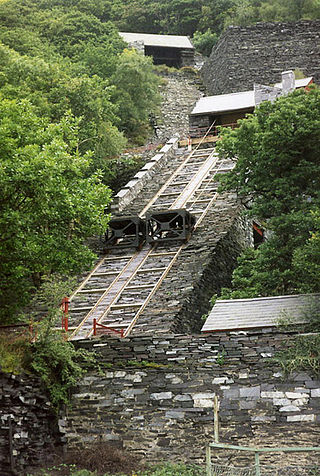
A cable railway is a railway that uses a cable, rope or chain to haul trains. It is a specific type of cable transportation.
The African Union of Railways is an organisation under the auspices of the new African Union dealing with railways. It is similar to the International Union of Railways (UIC).
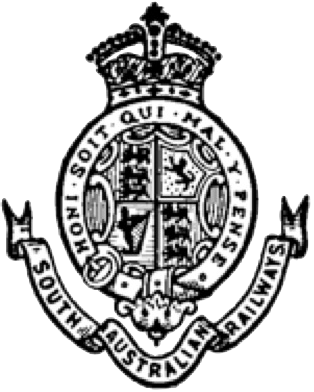
South Australian Railways (SAR) was the statutory corporation through which the Government of South Australia built and operated railways in South Australia from 1854 until March 1978, when its non-urban railways were incorporated into Australian National, and its Adelaide urban lines were transferred to the State Transport Authority.

Bogie exchange is a system for operating railway wagons on two or more gauges to overcome difference in the track gauge. To perform a bogie exchange, a car is converted from one gauge to another by removing the bogies or trucks, and installing a new bogie with differently spaced wheels. It is generally limited to wagons and carriages, though the bogies on diesel locomotives can be exchanged if enough time is available.

German Kleinlokomotiven like the DRG Kö II were developed as locomotives with a low weight and driving power for light shunting duties. There were two classes, based on engine power. The Class II were engines which developed more than 40 HP.
A steam brake is a type of brake for steam locomotives and their tenders, whereby a steam cylinder works directly on the brake linkages.

The Saxon Class V K were German 0-8-0T narrow gauge steam locomotives operated by the Royal Saxon State Railways which had been primarily intended for the Müglitztalbahn. In 1925 the Deutsche Reichsbahn incorporated arranged these locomotives as DRG Class 99.61.

A mine railway, sometimes pit railway, is a railway constructed to carry materials and workers in and out of a mine. Materials transported typically include ore, coal and overburden. It is little remembered, but the mix of heavy and bulky materials which had to be hauled into and out of mines gave rise to the first several generations of railways, at first made of wooden rails, but eventually adding protective iron, steam locomotion by fixed engines and the earliest commercial steam locomotives, all in and around the works around mines.
Buffers and chain couplers are the de facto International Union of Railways (UIC) standard railway coupling used in the EU and UK, and on some surviving former colonial railways, such as in South America and India, on older rolling stock. Buffers and chain couplers are an assembly of several devices: buffers, hooks and links, or turnbuckle screws.

The Cape Government Railways 2nd Class 2-6-2TT of 1875 was a South African steam locomotive from the pre-Union era in the Cape of Good Hope.
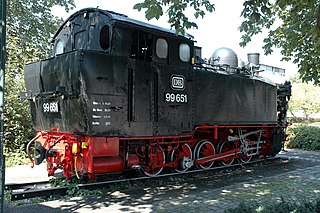
The Saxon VI K were a class of 750-mm gauge 0-10-0T locomotives of the Royal Saxon States Railways with a gauge of 750 mm. In 1925 the Deutsche Reichsbahn (DRG) grouped the locomotives into class 99.64–65; from 1923 to 1927 the procured more locomotives of this type which were grouped in to class 99.67–71.

